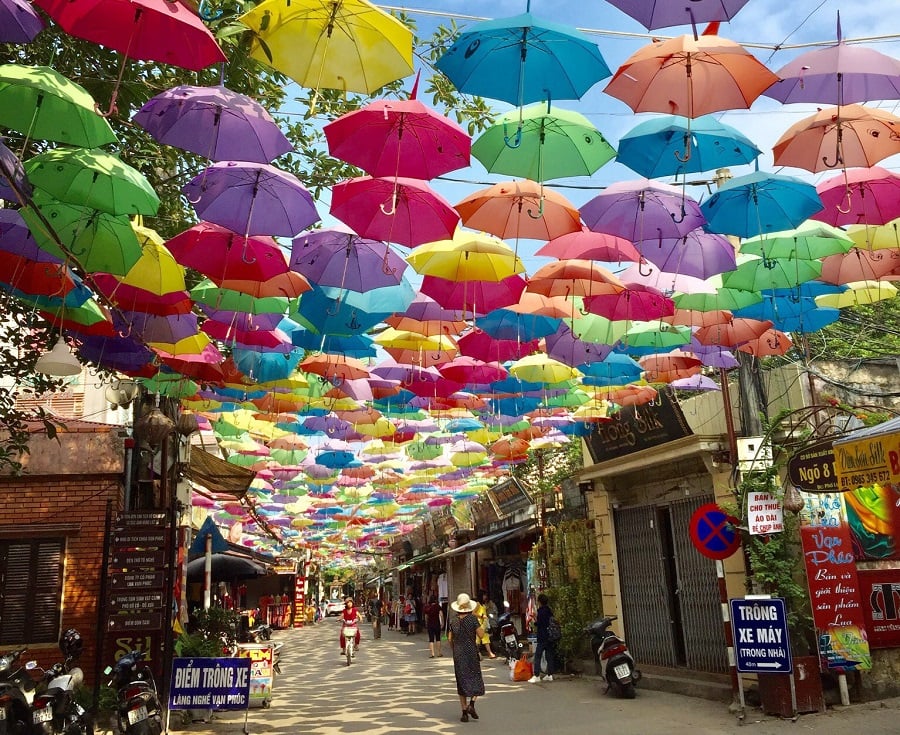
Photo: Collected
Each year, Hanoi welcomes more than millions of inbound tourism flock to experience Vietnamese traditional culture, along with its cosmopolitan atmosphere. Along with other famous ancient cultural sites such as the Old Quarter and Bat Trang Pottery Village, Van Phuc or Ha Dong Silk Village - one of the most long-standing and well-known silk weaving villages in Vietnam has gradually become a tourist attraction for international visitors in recent years.
1. How to get to Van Phuc Silk Village?
Located on the riverside of Nhue River in Van Phuc Ward, Ha Dong District, Hanoi, more than 10 kilometers away from the Hanoi Old Quarter, the gentle and steady flow has nurtured generations of artisans and their unique creations here. If you are a fan of local craft villages, remember to follow an easy route of Nguyen Trai - Le Van Luong - To Huu by any transportation or catch Bus 02 or 21 to visit Van Phuc Silk Village.
Entering Van Phuc Silk Village, this old place will captivate you immediately by the ancient typical features of northern villages, which are still preserved and honored after thousands of years with banyan trees, wells, communal houses, and so on. Therefore, a journey to Van Phuc Silk Village is considered one of the most must-have experiences for foreigners when traveling to Vietnam.
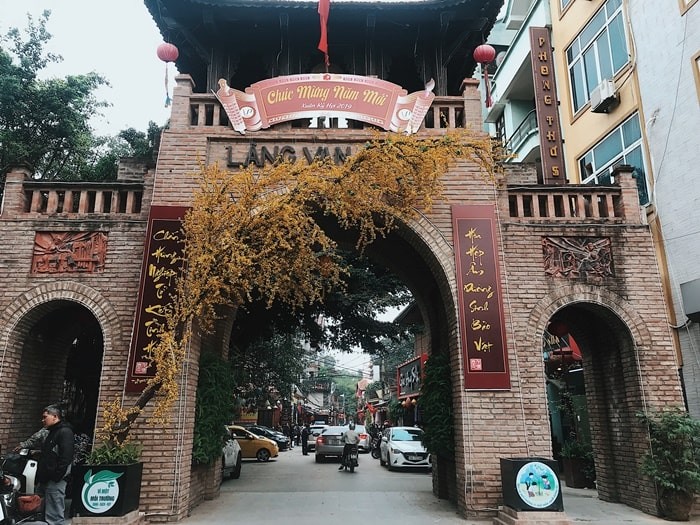
Photo: UBND Phuong Van Phuc
2. What is the history of Van Phuc Silk Village?
Van Phuc Silk Village can be dated back more than 1.000 years ago. At that time, Van Phuc silk was highly valued for a significant duration and sophisticated process, being seen as a top-notch craft for creating garments for members of the Royal family and the upper class in the Nguyen Dynasty. On a global scale, it was brought at international expositions for the first time in Marseille (1931) and later in Paris (1932). French people highly praised the aesthetic and top quality of this textile and between 1958 and 1988, the primary destination for Van Phuc silk exports was the Eastern European market. In 1990, it gained global recognition and became popular in various countries worldwide.
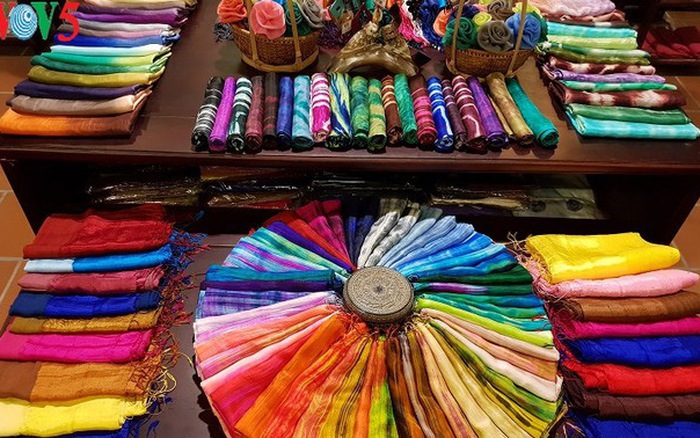
Photo: toluavietnam.net
After many ups and downs in history, Van Phuc silk is still a pride of Vietnam’s textile industry with the same values as before: soft yet durable, unique and stunningly elegant. Nowadays, artisans in Van Phuc Village have also updated themselves with modern patterns and styles to satisfy the diverse demand.
3. How to produce premium quality silk in Van Phuc Silk Village?
Van Phuc Silk Village is home to more than 800 Vietnamese households who have established their own stores along the primary road of the village, resulting in the development of a "silk town" where attractive and superior silk items are sold.
The most prominent kind of silk in Van Phuc is Van silk, especially known for its unique ability to keep individuals cool during warmer months and warm during colder months. Additionally, this fabric entails glimmering silk threads that make Van silk perfect for crafting “ao dai” (Vietnamese traditional garment).
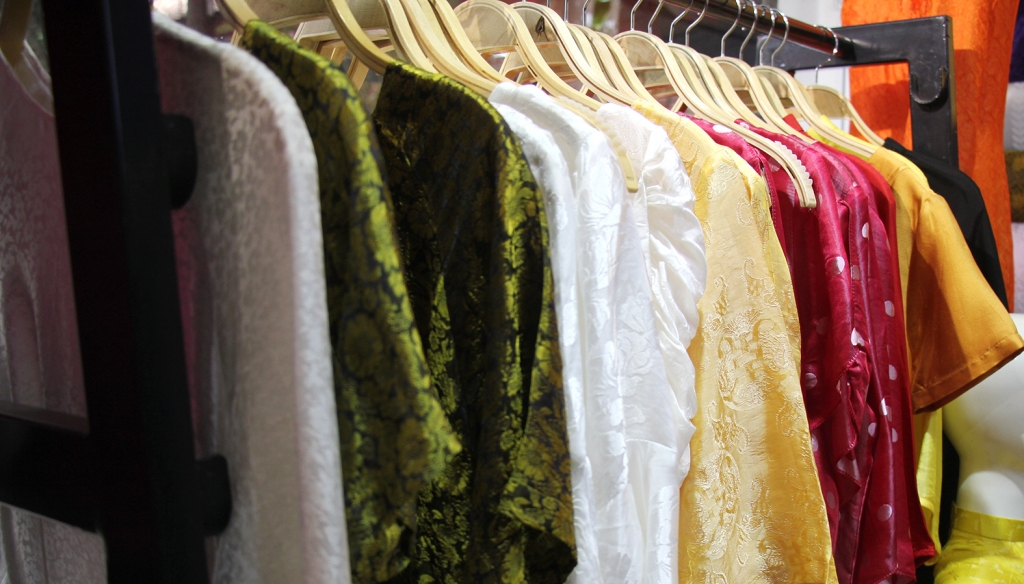
Photo: tuoitrethudo.com.vn
Most craft families now use mechanical weaving for increased efficiency, but foreigners can still appreciate the authentic Vietnamese method of producing silk with manual looms in some village homes.
Traditional production
Step 1: Sericulture (Silk farming)
People in the village plant “delicious” mulberry leaves to raise the silkworms, their secret is “the more you take care of the silkworms, the better quality of silk will be”. Then, silkworms will spin their cocoons when they are due, and only qualified cocoons are collected to make silk.
Step 2: Thread extraction
The chosen cocoons are immersed in hot water to break down and loosen the adhesive substance binding them together. Afterwards, every thread is meticulously extracted from the cocoon as separate and people will mostly take advantage of machines in this step to save time. The thread then will be straightened by a spinning wheel.
Step 3: Weaving
The straightened silk threads are attached to the weaving machine and the artist must remain alert and cannot rest until additional silk thread is added to the machine. After 2-3 days, the process will be complete and result in 50m of silk. The most frequently used weaves for silk are satin, plain, and open weaves, and the final appearance of the silk will be determined by the chosen weave pattern.
Step 4: Dyeing
Before dyeing, silks need to be bleached and boiled to remove impurities entirely. The amount and exact rate of dye colors are also a secret of artists in Van Phuc Silk Village to create vibrant and unique final products.
4. What to do in Van Phuc Silk Village?
4.1. Walking under the colorful umbrella road
First introduced in 2019, this 100-meter street filled with colorful silk shops along two sides and a hundred hanging umbrellas above has become a signature of Van Phuc Silk Village. During the culture week taking place in November annually, the umbrella road will be featured with lights and lanterns to create an even more magical atmosphere in the village.
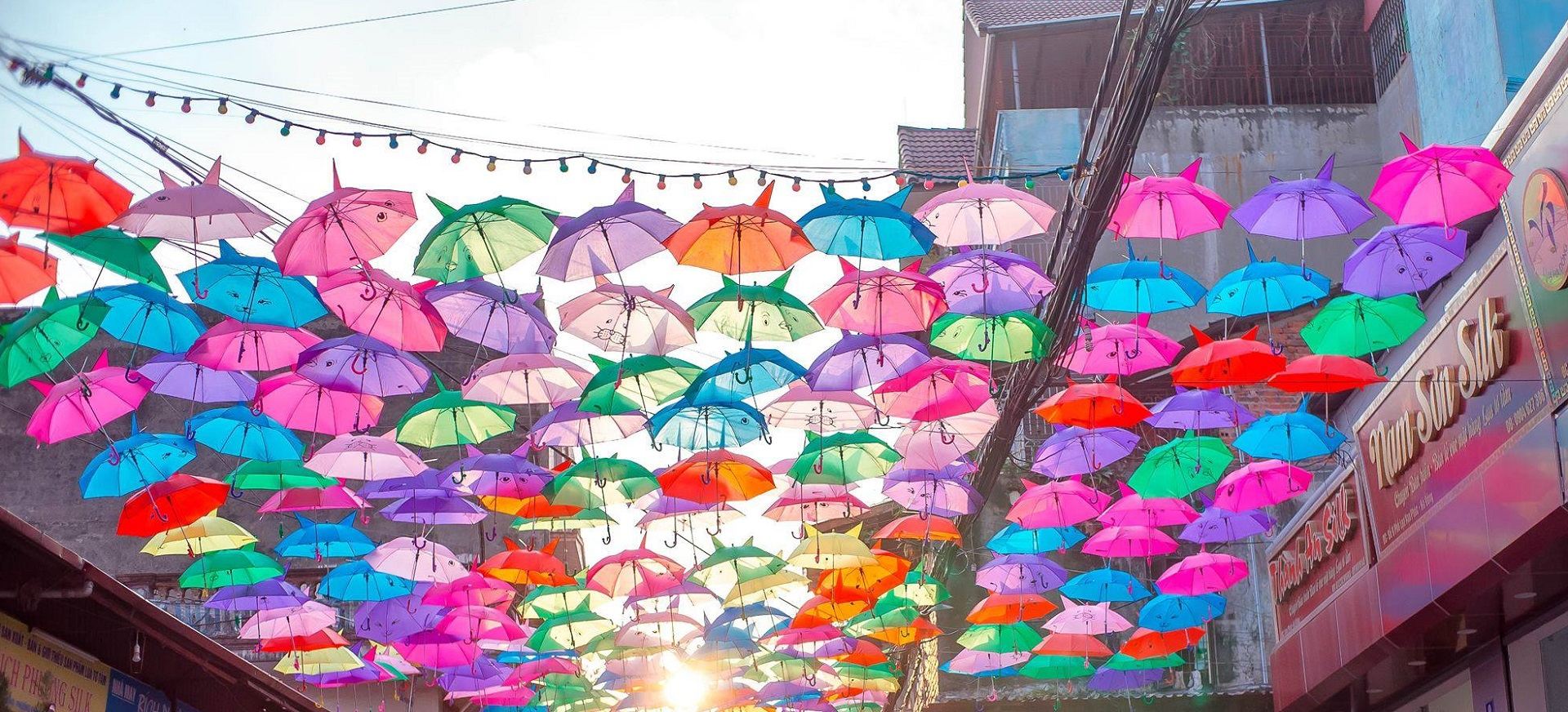 Photo: Collected
Photo: Collected
4.2. Buying silk from stores
What a miss if you don’t bring home a piece of Ha Dong silk when paying a visit here. The shelves here are neatly arranged with a variety of colors and designs of Van Phuc silk, which is visually appealing. The price of the silk fabric ranges from 100.000 VND to 250.000 VND per square meter, making it accessible to a wide range of customers.
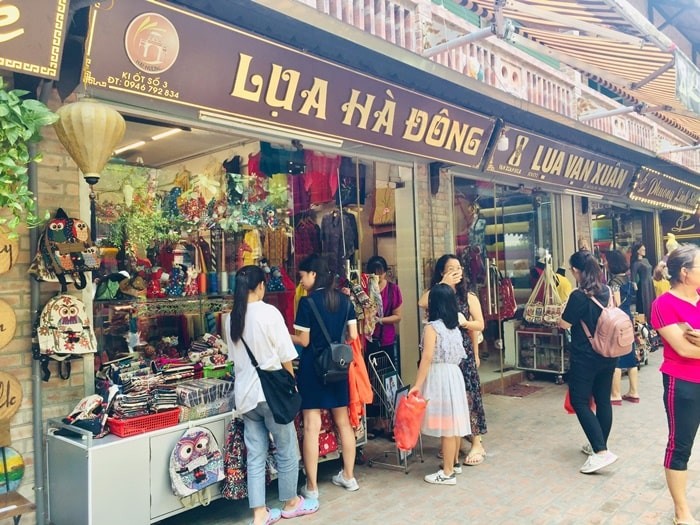
Photo: UBND Phuong Van Phuc
4.3. Check-in the mural village walls
The mural wall located in Van Phuc Village is a well-known location for tourists to take photos. The one-of-a-kind pictures displayed on the wall were created by instructors at Van Phuc Preschool and showcase the daily routines of the silk-weaving community through hand-painted artwork.
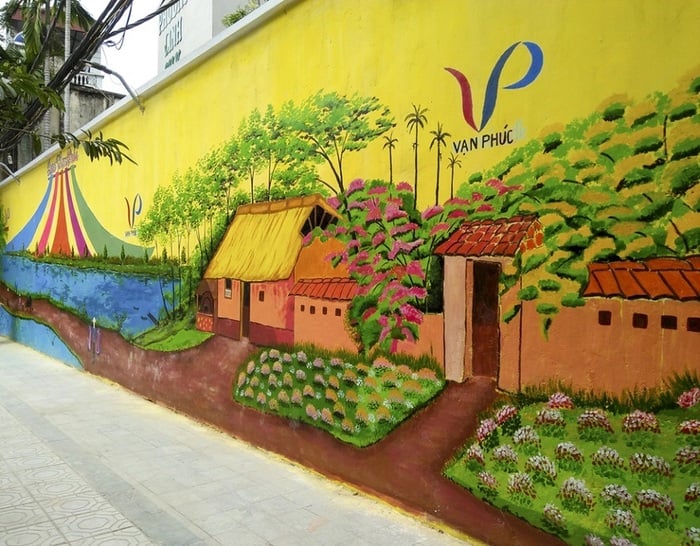
Photo: toquoc.vn